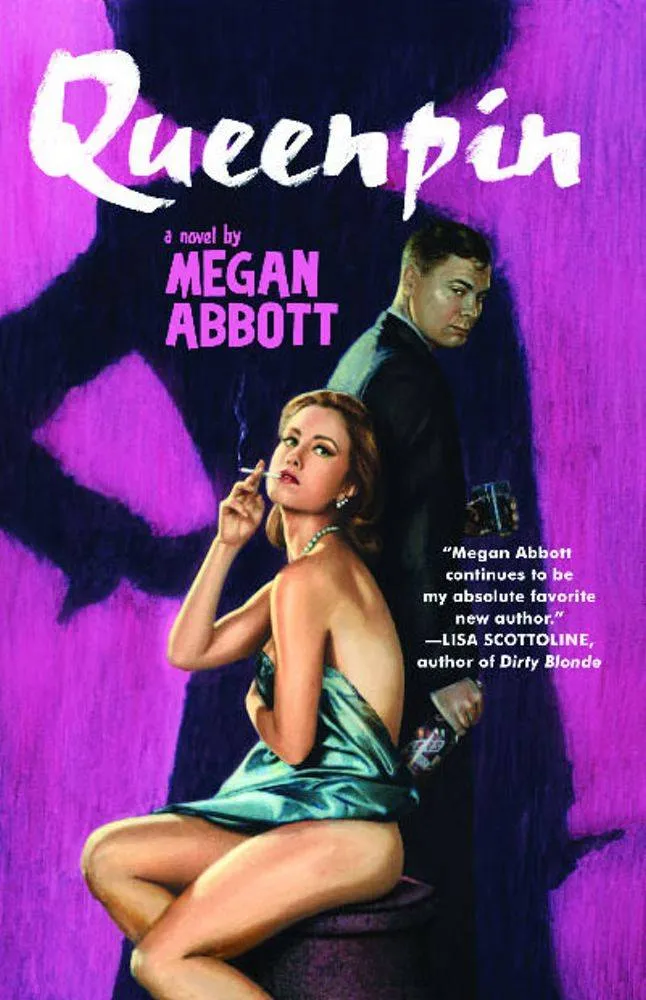
Riot Round-Up: The Best Books We Read in March
We asked our contributors to share the best book they read this month. We’ve got fiction, nonfiction, YA, memoir, and more. Some are old, some are new, and some aren’t even out yet. Enjoy, and please tell us about the highlight of your reading month in the comments.
 12.21 by Dustin Thomason
Sometimes you just need a medical thriller with some Mayan apocalypse drama thrown in for spice. Though the premise isn’t a new one, Thomason’s novel shakes up this overdone plot line of ancient curses and archeological mysteries with some timely end-of-the-world fun. This isn’t Hemingway, but when the main medical epidemic in a novel kills people by giving them weeks-long insomnia, and you JUST. KEEP. READING. because you’re a little scared you won’t be able to fall asleep, I’d say that’s a successful thriller. Thomason has done a great job at creating suspense connected to a thousand-year-old codex – not an easy feat – and making the reader a teensy bit afraid that the apocalypse might really have a chance. Thankfully Dec. 21, 2012 is already long gone.
–Rachel Manwill
12.21 by Dustin Thomason
Sometimes you just need a medical thriller with some Mayan apocalypse drama thrown in for spice. Though the premise isn’t a new one, Thomason’s novel shakes up this overdone plot line of ancient curses and archeological mysteries with some timely end-of-the-world fun. This isn’t Hemingway, but when the main medical epidemic in a novel kills people by giving them weeks-long insomnia, and you JUST. KEEP. READING. because you’re a little scared you won’t be able to fall asleep, I’d say that’s a successful thriller. Thomason has done a great job at creating suspense connected to a thousand-year-old codex – not an easy feat – and making the reader a teensy bit afraid that the apocalypse might really have a chance. Thankfully Dec. 21, 2012 is already long gone.
–Rachel Manwill
 The Amazing Hamweenie by Patty Bowman
An amazing picture book about the precocious Hamweenie, who has grand dreams of being a famous magician and loved the world over. Instead, he must resign himself to apartment living, tea parties with little girls and fishy snacks, because Hamweenie is a cat. Cats can’t be world-renowned magicians, Hamweenie! Cat owners will recognize a bit of their cats in this book. Bowman’s wonderful illustrations of Hamweenie’s daydreams and schemes are delightful and hilarious. I hope there are more Hamweenie adventures. Plus, it’s just really fun to say Hamweenie. Hamweenie.
–Liberty Hardy
The Amazing Hamweenie by Patty Bowman
An amazing picture book about the precocious Hamweenie, who has grand dreams of being a famous magician and loved the world over. Instead, he must resign himself to apartment living, tea parties with little girls and fishy snacks, because Hamweenie is a cat. Cats can’t be world-renowned magicians, Hamweenie! Cat owners will recognize a bit of their cats in this book. Bowman’s wonderful illustrations of Hamweenie’s daydreams and schemes are delightful and hilarious. I hope there are more Hamweenie adventures. Plus, it’s just really fun to say Hamweenie. Hamweenie.
–Liberty Hardy
 City of Saints and Madmen by Jeff VanderMeer
As a founding member of the New Weird and a prodigious imagination in his own right, Jeff VanderMeer’s crowning fictional achievement is the city of Ambergris, the most original and compelling megalopolis to appear in Fantasy for years. Providing this collection (as a novel comprised of novellas, it is the only appropriate word) with both its title and setting, Ambergris is a fungus-riddled phantasmagoria of hidden history and untrustworthy reality, and is, more than any of its curious inhabitants, the main character of this book. VanderMeer exploits every technique in his elegant, postmodernist arsenal to make the reader’s connection to the city real and unnerving, and unless you prefer your fiction as ploddingly linear as possible, you will be thrilled by the experience. Continued in Shriek: An Afterword and Finch, the other two entries in the Ambergris trilogy, City of Saints and Madmen is a true masterpiece of literary world-building.
–Sean Bell
City of Saints and Madmen by Jeff VanderMeer
As a founding member of the New Weird and a prodigious imagination in his own right, Jeff VanderMeer’s crowning fictional achievement is the city of Ambergris, the most original and compelling megalopolis to appear in Fantasy for years. Providing this collection (as a novel comprised of novellas, it is the only appropriate word) with both its title and setting, Ambergris is a fungus-riddled phantasmagoria of hidden history and untrustworthy reality, and is, more than any of its curious inhabitants, the main character of this book. VanderMeer exploits every technique in his elegant, postmodernist arsenal to make the reader’s connection to the city real and unnerving, and unless you prefer your fiction as ploddingly linear as possible, you will be thrilled by the experience. Continued in Shriek: An Afterword and Finch, the other two entries in the Ambergris trilogy, City of Saints and Madmen is a true masterpiece of literary world-building.
–Sean Bell
 Clockwork Princess by Cassandra Clare
I’ve was looking forward to reading Clockwork Princess, the third and final book in Clare’s Infernal Devices trilogy, and I was not disappointed. Full of Clare’s signature witty dialogue, attractive male characters, and heart-wrenching love triangles, Princess brought the trilogy to a satisfying (and tear-jerking) conclusion. It was fascinating to read an actual ending by Cassandra Clare because in my experience of her writing so far – both in her Mortal Instruments series and her fanfiction from back in the day – she just spins things out and complicates the plot until I start to lose interest in the characters. It turns she does know how to wrap up a series and she does it rather well. Infernal Devices is a page turner of a series; it took me four days to finish it, and each book is around 500 pages. If you like YA fantasy, sarcastic young men, and great storytelling, you’ll enjoy it too.
–Becky Cole
Clockwork Princess by Cassandra Clare
I’ve was looking forward to reading Clockwork Princess, the third and final book in Clare’s Infernal Devices trilogy, and I was not disappointed. Full of Clare’s signature witty dialogue, attractive male characters, and heart-wrenching love triangles, Princess brought the trilogy to a satisfying (and tear-jerking) conclusion. It was fascinating to read an actual ending by Cassandra Clare because in my experience of her writing so far – both in her Mortal Instruments series and her fanfiction from back in the day – she just spins things out and complicates the plot until I start to lose interest in the characters. It turns she does know how to wrap up a series and she does it rather well. Infernal Devices is a page turner of a series; it took me four days to finish it, and each book is around 500 pages. If you like YA fantasy, sarcastic young men, and great storytelling, you’ll enjoy it too.
–Becky Cole
 Eighty Days by Matthew Goodman
On November 14, 1889 25-year-old reporter Nellie Bly left New York on a steamship heading for England on a quest to go travel around the world faster than Phineas Fogg’s fictional trip in Jules Verne’s Around the World in Eighty Days. Hours later, 28-year-old literary critic Elizabeth Bisland left New York by train heading to San Francisco, intending to race Bly around the world at the behest of her magazine editor. In Eighty Days, Goodman tells the story of these two intrepid women, traveling through some of the most difficult circumstances at a time when most of the world couldn’t figure out how a woman could possibly travel with only one suitcase. Goodman intersperses their adventures with a bunch of historical tidbits that I ate up with a spoon.
–Kim Ukura
Eighty Days by Matthew Goodman
On November 14, 1889 25-year-old reporter Nellie Bly left New York on a steamship heading for England on a quest to go travel around the world faster than Phineas Fogg’s fictional trip in Jules Verne’s Around the World in Eighty Days. Hours later, 28-year-old literary critic Elizabeth Bisland left New York by train heading to San Francisco, intending to race Bly around the world at the behest of her magazine editor. In Eighty Days, Goodman tells the story of these two intrepid women, traveling through some of the most difficult circumstances at a time when most of the world couldn’t figure out how a woman could possibly travel with only one suitcase. Goodman intersperses their adventures with a bunch of historical tidbits that I ate up with a spoon.
–Kim Ukura
 Eleanor & Park by Rainbow Rowell
This tale of two music-loving sixteen-year-old misfits from the wrong side of the tracks in Omaha fills me with so much love I’m surprised magic sparkles don’t fly from my fingertips whenever I type about it. Set in 1986 these two crazy kids go from wary interest to gushy teenage love while sharing a seat on the bus and trying to avoid the asshole cool kids who sit in the back. There is not a single sour note in this lovely YA novel that I cannot stop yammering about. It’s so touching and Rowell perfectly captures that exquisite torture that is falling in love for the first time.
–Jodi Chromey
Eleanor & Park by Rainbow Rowell
This tale of two music-loving sixteen-year-old misfits from the wrong side of the tracks in Omaha fills me with so much love I’m surprised magic sparkles don’t fly from my fingertips whenever I type about it. Set in 1986 these two crazy kids go from wary interest to gushy teenage love while sharing a seat on the bus and trying to avoid the asshole cool kids who sit in the back. There is not a single sour note in this lovely YA novel that I cannot stop yammering about. It’s so touching and Rowell perfectly captures that exquisite torture that is falling in love for the first time.
–Jodi Chromey
 Finding Moosewood, Finding God by Jack Perkins
At the height of a successful career, famed NBC news correspondent Jack Perkins traded designer suits for L.L. Bean boots and moved three thousand miles from the bustling streets of LA to a small tidal island off the coast of Bar Harbor, Maine. His memoir chronicles a series of divine encounters that eventually led him to Acadia and reflects on how going rustic in the wild beauty of Maine changed his perspective on life. Lovers of spiritual memoir, Thoreau, or travel writing will find Finding Moosewood a fulfilling read.
–Kate Scott
Finding Moosewood, Finding God by Jack Perkins
At the height of a successful career, famed NBC news correspondent Jack Perkins traded designer suits for L.L. Bean boots and moved three thousand miles from the bustling streets of LA to a small tidal island off the coast of Bar Harbor, Maine. His memoir chronicles a series of divine encounters that eventually led him to Acadia and reflects on how going rustic in the wild beauty of Maine changed his perspective on life. Lovers of spiritual memoir, Thoreau, or travel writing will find Finding Moosewood a fulfilling read.
–Kate Scott
 Four Fish by Paul Greenberg
Ever deeply wondered where your salmon comes from? Or sea bass, cod or tuna? Greenberg, an avid fisherman and wowza writer (the way he describes a salmon run in Alaska made me want to move there) does the dirty work for you. Delving into the natural history, social history, and potential futures of these iconic fish (where genetically modified farmed ones take over, and wild ones go the way of the Dodo) you won’t look at your finned friends’ dead eyes at the fish counter in the same way again.
–Elizabeth Bastos
Four Fish by Paul Greenberg
Ever deeply wondered where your salmon comes from? Or sea bass, cod or tuna? Greenberg, an avid fisherman and wowza writer (the way he describes a salmon run in Alaska made me want to move there) does the dirty work for you. Delving into the natural history, social history, and potential futures of these iconic fish (where genetically modified farmed ones take over, and wild ones go the way of the Dodo) you won’t look at your finned friends’ dead eyes at the fish counter in the same way again.
–Elizabeth Bastos
 Harlan 101: Encountering Ellison
Harlan Ellison is well known in the circles of speculative fiction, having won the Hugo nine times and the Nebula Award four times He’s even won a Grammy. Encountering Ellison is a collection of some of his most well known stories and includes seven essays on the craft of writing. Either of these, the stories or the essays, would be totally worth the hefty price ($39.95). The stories include his most famous ones, The Deathbird and I Have No Mouth, and I Must Scream. Harlan writes science fiction and a sort of dark contemporary fantasy (speculative fiction) that is among the best out there, and the stories age really well. If you write short fiction, especially science fiction or fantasy, you want this book. Trust me. The book has an introduction by Neil Gaiman in which he says: “You are lucky to be holding this book in your hands.”
–Johann Thorsson
Harlan 101: Encountering Ellison
Harlan Ellison is well known in the circles of speculative fiction, having won the Hugo nine times and the Nebula Award four times He’s even won a Grammy. Encountering Ellison is a collection of some of his most well known stories and includes seven essays on the craft of writing. Either of these, the stories or the essays, would be totally worth the hefty price ($39.95). The stories include his most famous ones, The Deathbird and I Have No Mouth, and I Must Scream. Harlan writes science fiction and a sort of dark contemporary fantasy (speculative fiction) that is among the best out there, and the stories age really well. If you write short fiction, especially science fiction or fantasy, you want this book. Trust me. The book has an introduction by Neil Gaiman in which he says: “You are lucky to be holding this book in your hands.”
–Johann Thorsson
 The Interestings by Meg Wolitzer (Riverhead, April 9)
A panoramic novel set in New York City, the story centers around a group of friends who met at a summer camp for artists. They form a bond that lasts throughout their whole lives, and deal with money, envy, social issues, power, and death. It’s a big book with outstanding character development, and an up close and personal look at the effect of what happens when one friend is more successful than another friend. Quite an ambitious book, but Wolitzer uses her keen eye for observing social statuses and has an ability to tell a realistic and non-boring version of how people age.
–Emily Gatlin
The Interestings by Meg Wolitzer (Riverhead, April 9)
A panoramic novel set in New York City, the story centers around a group of friends who met at a summer camp for artists. They form a bond that lasts throughout their whole lives, and deal with money, envy, social issues, power, and death. It’s a big book with outstanding character development, and an up close and personal look at the effect of what happens when one friend is more successful than another friend. Quite an ambitious book, but Wolitzer uses her keen eye for observing social statuses and has an ability to tell a realistic and non-boring version of how people age.
–Emily Gatlin
 Maine by J. Courtney Sullivan
I’ve had this on my shelf since it was declared the MUST-READ of summer 2011. I finally got around to it in the winter of 2013, and I’m so glad I did! It follows the women of a large Irish Catholic family, spanning several generations of alcoholism and dysfunction. The characters are just perfect- one part hateful and one part sympathetic, just like…ya know, most people. I spent an inordinate amount of time wondering if I’m an Alice (the hard-hearted, cold, and vain matriarch) or a Maggie (the artist granddaughter in therapy), which means the book made me think for hours about what sort of woman, mother, and creative-type I am and want to be. I’m sure it would be a perfect summer read, but I say read it whenever you can, wherever you can.
–Amanda Nelson
Maine by J. Courtney Sullivan
I’ve had this on my shelf since it was declared the MUST-READ of summer 2011. I finally got around to it in the winter of 2013, and I’m so glad I did! It follows the women of a large Irish Catholic family, spanning several generations of alcoholism and dysfunction. The characters are just perfect- one part hateful and one part sympathetic, just like…ya know, most people. I spent an inordinate amount of time wondering if I’m an Alice (the hard-hearted, cold, and vain matriarch) or a Maggie (the artist granddaughter in therapy), which means the book made me think for hours about what sort of woman, mother, and creative-type I am and want to be. I’m sure it would be a perfect summer read, but I say read it whenever you can, wherever you can.
–Amanda Nelson
 The Mirage by Matt Ruff
On November 9, 2001, planes hijacked by Christian fundamentalists crashed into twin towers in downtown Baghdad. Or, at least, that’s what happens in Matt Ruff’s innovative The Mirage, a (sort-of-but-not-really) alternative history of the past decade. The story follows Arabian Homeland Security officers tasked with investigating claims that the present geopolitical landscape—with the United Arabian States a superpower and North America a patchwork of fragmented and failed nations—is a mirage. Ruff is blisteringly smart, but he doesn’t just coast on his clever concept . Instead, he uses that concept to develop interesting characters with real emotional heft.
–Derek Attig
The Mirage by Matt Ruff
On November 9, 2001, planes hijacked by Christian fundamentalists crashed into twin towers in downtown Baghdad. Or, at least, that’s what happens in Matt Ruff’s innovative The Mirage, a (sort-of-but-not-really) alternative history of the past decade. The story follows Arabian Homeland Security officers tasked with investigating claims that the present geopolitical landscape—with the United Arabian States a superpower and North America a patchwork of fragmented and failed nations—is a mirage. Ruff is blisteringly smart, but he doesn’t just coast on his clever concept . Instead, he uses that concept to develop interesting characters with real emotional heft.
–Derek Attig
 Out by Natsuo Kirino
When Rachel called this a badass female revenge thriller and put it alongside Gone Girl and Michel Faber’s Under the Skin–two books that made me all kinds of tingly in my reading parts–I knew I had to have it. And HOO BOY, what a ride! About a group of Japanese women who work the night shift in a factory and become conspirators when one kills her husband and the others work to help her cover it up, this is a deliciously dark read about why you don’t fuck with strong women. It’s gritty and disturbing, and you won’t get through it without squirming (I think it’s closer to Under the Skin than to Gone Girl), but you’ll love every uncomfortable minute of it.
–Rebecca Joines Schinsky
Out by Natsuo Kirino
When Rachel called this a badass female revenge thriller and put it alongside Gone Girl and Michel Faber’s Under the Skin–two books that made me all kinds of tingly in my reading parts–I knew I had to have it. And HOO BOY, what a ride! About a group of Japanese women who work the night shift in a factory and become conspirators when one kills her husband and the others work to help her cover it up, this is a deliciously dark read about why you don’t fuck with strong women. It’s gritty and disturbing, and you won’t get through it without squirming (I think it’s closer to Under the Skin than to Gone Girl), but you’ll love every uncomfortable minute of it.
–Rebecca Joines Schinsky
 Painted Faces by L.H. Cosway
There are some books that are made for self-publishing, and Painted Faces is one of those books. Too “weird” for traditional publishers and too sweet for many romance e-publishers, it tells the story of a young Dubliner named Freda who falls in love with a drag queen. That’s right, a drag queen. One doesn’t come across heterosexual drag queen heroes in the average romance novel, that’s for sure; and books like this make me glad self-publishing is now an affordable option for writers, as this story is definitely one that deserves to be read. I downloaded Painted Faces because the premise sounded just crazy enough to be awesome (and it came highly recommended), and I’m really glad I did. Forget about the drag queen thing, though–what really makes Painted Faces great is the heroine. Freda is an awesome character who is absolutely hilarious and I immediately fell in love with her. The secondary characters are also fun, and the setting is fabulous. I now officially love Dublin as a setting in any book. The novel does tend to get 50 Shades-y at times, but these are just small blips; for the most part, Painted Faces is entertaining and unputdownable–I stayed up until 3 AM while I was sick reading it. If you like contemporary romances you should definitely check it out.
–Tasha Brandstatter
Painted Faces by L.H. Cosway
There are some books that are made for self-publishing, and Painted Faces is one of those books. Too “weird” for traditional publishers and too sweet for many romance e-publishers, it tells the story of a young Dubliner named Freda who falls in love with a drag queen. That’s right, a drag queen. One doesn’t come across heterosexual drag queen heroes in the average romance novel, that’s for sure; and books like this make me glad self-publishing is now an affordable option for writers, as this story is definitely one that deserves to be read. I downloaded Painted Faces because the premise sounded just crazy enough to be awesome (and it came highly recommended), and I’m really glad I did. Forget about the drag queen thing, though–what really makes Painted Faces great is the heroine. Freda is an awesome character who is absolutely hilarious and I immediately fell in love with her. The secondary characters are also fun, and the setting is fabulous. I now officially love Dublin as a setting in any book. The novel does tend to get 50 Shades-y at times, but these are just small blips; for the most part, Painted Faces is entertaining and unputdownable–I stayed up until 3 AM while I was sick reading it. If you like contemporary romances you should definitely check it out.
–Tasha Brandstatter
 Queenpin by Megan Abbott
I’ve been striking out lately, but Megan Abbott’s Queenpin was a flicker at the end of a dark tunnel. Set in mid-century somewheresville, Queenpin is populated with diamond heists, race tracks, roulette wheels, and gin martinis. Mob legend Gloria Denton is grooming a young ingenue for the seedy criminal underworld, but things turn awry when the protégée narrator falls for a freewheeling gambling man named Vic. The two leading ladies are strong and unrepentant, and Abbott’s spare, tight wordplay is refreshing. I’m desperately curious about her follow up novel starring — wait for it — high school cheerleaders!
–Rachel Smalter Hall
Queenpin by Megan Abbott
I’ve been striking out lately, but Megan Abbott’s Queenpin was a flicker at the end of a dark tunnel. Set in mid-century somewheresville, Queenpin is populated with diamond heists, race tracks, roulette wheels, and gin martinis. Mob legend Gloria Denton is grooming a young ingenue for the seedy criminal underworld, but things turn awry when the protégée narrator falls for a freewheeling gambling man named Vic. The two leading ladies are strong and unrepentant, and Abbott’s spare, tight wordplay is refreshing. I’m desperately curious about her follow up novel starring — wait for it — high school cheerleaders!
–Rachel Smalter Hall
 Red Doc> by Anne Carson
It’s been years since I read The Autobiography of Red, but the impact of that book has never faded. So you can imagine my excitement when I heard about the sequel, and my glee when I got my hands on a copy. There may have been jumping up and down. And Red Doc> absolutely does not disappoint. Carson is a wordsmith of the highest order, and sends the reader on a roadtrip of mythic proportions, complete with strange creatures, colorful side characters, revelations and losses. Plus, it’s really fun to speculate about the use of the greater-than sign. What do you think it means?
–Jenn Northington
Red Doc> by Anne Carson
It’s been years since I read The Autobiography of Red, but the impact of that book has never faded. So you can imagine my excitement when I heard about the sequel, and my glee when I got my hands on a copy. There may have been jumping up and down. And Red Doc> absolutely does not disappoint. Carson is a wordsmith of the highest order, and sends the reader on a roadtrip of mythic proportions, complete with strange creatures, colorful side characters, revelations and losses. Plus, it’s really fun to speculate about the use of the greater-than sign. What do you think it means?
–Jenn Northington
 The Safety of Objects by A. M. Homes
I often hear great writers described as surgeons, but I think of A.M. Homes more as a dentist (and I mean that in the best possible way). In her 1990 collection, The Safety of Objects, she explores the quiet desperation of suburbia, shining a blinding and unflattering light right in your face as she pokes, prods, and excavates with her sharp and sinister tools. She also (like my dentist, at least) uses humor to temper the discomfort–and that’s when she busts out the drill. These stories are uncomfortable but necessary, and leave you disoriented, numb, and desperate for a lollipop.
(Important Tip: DO NOT read the back cover. It commits the cardinal sin of revealing just a bit too much and diffuses some of the suspense.)
–Minh Le
The Safety of Objects by A. M. Homes
I often hear great writers described as surgeons, but I think of A.M. Homes more as a dentist (and I mean that in the best possible way). In her 1990 collection, The Safety of Objects, she explores the quiet desperation of suburbia, shining a blinding and unflattering light right in your face as she pokes, prods, and excavates with her sharp and sinister tools. She also (like my dentist, at least) uses humor to temper the discomfort–and that’s when she busts out the drill. These stories are uncomfortable but necessary, and leave you disoriented, numb, and desperate for a lollipop.
(Important Tip: DO NOT read the back cover. It commits the cardinal sin of revealing just a bit too much and diffuses some of the suspense.)
–Minh Le
 Salt Sugar Fat: How the Food Giants Hooked Us by Michael Moss
Pulitzer-Prize winning reporter Michael Moss’s new book is an explosive expose of the lucrative processed foods industry, focused on the three additives that food companies use to “hook” us: salt, sugar, and fat. Salt Sugar Fat is well-researched and loaded with original interviews with many of the architects behind the processed food we eat, including a former Coca-Cola executive and the creator of Lunchables. Hearing firsthand accounts from whistleblowers about companies manipulating their “heavy users” through scientifically-calculated “bliss points” (achieved by manipulating salt, sugar and fat in their products) is chilling. Perhaps the most disturbing thing I learned, however, was that Betty Crocker was never a real person.
–Andrew Shaffer
Salt Sugar Fat: How the Food Giants Hooked Us by Michael Moss
Pulitzer-Prize winning reporter Michael Moss’s new book is an explosive expose of the lucrative processed foods industry, focused on the three additives that food companies use to “hook” us: salt, sugar, and fat. Salt Sugar Fat is well-researched and loaded with original interviews with many of the architects behind the processed food we eat, including a former Coca-Cola executive and the creator of Lunchables. Hearing firsthand accounts from whistleblowers about companies manipulating their “heavy users” through scientifically-calculated “bliss points” (achieved by manipulating salt, sugar and fat in their products) is chilling. Perhaps the most disturbing thing I learned, however, was that Betty Crocker was never a real person.
–Andrew Shaffer
 A Storm of Swords by George R. R. Martin
I didn’t think I was ever going to finish this 1100-plus page brick of a book, the third in the Song of Ice and Fire series, on which the runaway hit Game of Thrones is based. I love the show, but I absolutely adore the books. Martin’s writing is stronger here than in books one and two. I realized this when I found myself actually loving a character I had previously loved to hate. All of the backstory is fascinating and really well done. Most remarkable, though, is how very strong all the women are in their own ways, from brute strength to conniving to an impenetrable armor of courtesy. Obviously, I’m being very careful to avoid spoilers here. If you watch the show, read the books. This series has essentially nothing in common with Harry Potter, but in my case a relevant comparison is that, like Prisoner of Azkaban, A Storm of Swords is shaping up to be my favorite in the series.
–Jeanette Solomon
A Storm of Swords by George R. R. Martin
I didn’t think I was ever going to finish this 1100-plus page brick of a book, the third in the Song of Ice and Fire series, on which the runaway hit Game of Thrones is based. I love the show, but I absolutely adore the books. Martin’s writing is stronger here than in books one and two. I realized this when I found myself actually loving a character I had previously loved to hate. All of the backstory is fascinating and really well done. Most remarkable, though, is how very strong all the women are in their own ways, from brute strength to conniving to an impenetrable armor of courtesy. Obviously, I’m being very careful to avoid spoilers here. If you watch the show, read the books. This series has essentially nothing in common with Harry Potter, but in my case a relevant comparison is that, like Prisoner of Azkaban, A Storm of Swords is shaping up to be my favorite in the series.
–Jeanette Solomon
 Super Sad True Love Story by Gary Shteyngart
Lenny Abramov, a sad-sack immortality peddler (no, really) falls for a rudderless young woman from a strict Korean family in what is unquestionably one of the most frightening dystopias I’ve encountered in print. At times, SSTL feels like Infinite Jest’s younger cousin, offering us a future where the lines between private and public lives have all but evaporated, the U.S. economy has come under China’s thumb, and credit scores are shorthand for self-worth. Wait, does that not sound particularly futuristic? If not, you understand why Shteyngart’s vision is so freaky: it amplifies current trends in a way that never seems outlandish enough to warrant dismissal. Under the book’s decidedly sharp satire, however, is a story about the anxieties many of us face with regards to our families, our jobs, and our desire to find love. SSTL works incredibly well on both of these levels and left me ready to check out Mr. Shteyngart’s other books, Absurdistan and The Russian Debutante’s Handbook.
–Josh Corman
Super Sad True Love Story by Gary Shteyngart
Lenny Abramov, a sad-sack immortality peddler (no, really) falls for a rudderless young woman from a strict Korean family in what is unquestionably one of the most frightening dystopias I’ve encountered in print. At times, SSTL feels like Infinite Jest’s younger cousin, offering us a future where the lines between private and public lives have all but evaporated, the U.S. economy has come under China’s thumb, and credit scores are shorthand for self-worth. Wait, does that not sound particularly futuristic? If not, you understand why Shteyngart’s vision is so freaky: it amplifies current trends in a way that never seems outlandish enough to warrant dismissal. Under the book’s decidedly sharp satire, however, is a story about the anxieties many of us face with regards to our families, our jobs, and our desire to find love. SSTL works incredibly well on both of these levels and left me ready to check out Mr. Shteyngart’s other books, Absurdistan and The Russian Debutante’s Handbook.
–Josh Corman
 Sutton by J.R. Moehringer
Some writers write such smooth, insightful sentences and paragraphs, you’d read them on just about any subject. For me, J.R. Moehringer is one of those writers. But the subject of his first novel, Sutton, about early 20th-century anti-hero bank robber Willie Sutton, actually IS fascinating. The story is a simple fictional biography of the man, who when asked why he robbed banks, replied “Because that’s where the money is.” We start with Sutton’s release from jail in 1969 — and then follow him around New York as he tells a journalist the story of his life. We flash back in time to the 1920s and 30s when Sutton became a Robin Hood-like legend, stealing from banks that ruined the economy (and peoples’ lives) with less-than-on-the-level practices. (Sound familiar?) But Moehringer also has a few tricks up his sleeve as we hurdle to the conclusion — how does memory mix with myth to create (or to muddle?) perception of historical events? It’s an interesting question to think about, and this is an interesting novel — very much worth a read.
–Greg Zimmerman
Sutton by J.R. Moehringer
Some writers write such smooth, insightful sentences and paragraphs, you’d read them on just about any subject. For me, J.R. Moehringer is one of those writers. But the subject of his first novel, Sutton, about early 20th-century anti-hero bank robber Willie Sutton, actually IS fascinating. The story is a simple fictional biography of the man, who when asked why he robbed banks, replied “Because that’s where the money is.” We start with Sutton’s release from jail in 1969 — and then follow him around New York as he tells a journalist the story of his life. We flash back in time to the 1920s and 30s when Sutton became a Robin Hood-like legend, stealing from banks that ruined the economy (and peoples’ lives) with less-than-on-the-level practices. (Sound familiar?) But Moehringer also has a few tricks up his sleeve as we hurdle to the conclusion — how does memory mix with myth to create (or to muddle?) perception of historical events? It’s an interesting question to think about, and this is an interesting novel — very much worth a read.
–Greg Zimmerman
 A Week At The Airport by Alain de Botton
In 2009, London Heathrow’s Terminal 5 hired de Botton to take up residence for a week, with full access to wander about at all times of the day, speak to anyone he liked, and write about anything he saw. The result is one of the strangest pieces of travel writing my brain has ever grappled with. As with all his other work it’s a beautiful and thoughtful read, but it’s also…eerie. Airports are strange places, packed with people and home to nobody. They’re stressful and soporific, thrilling and mundane. I’ve always been fascinated by them and yet, thanks to a fear of flying, mildly terrified of them. I feel a lot better about them after having read this book, which digs deep into the human stories that keep them running. It’s all still bouncing round my head a few weeks later.
–Mike Sowden
A Week At The Airport by Alain de Botton
In 2009, London Heathrow’s Terminal 5 hired de Botton to take up residence for a week, with full access to wander about at all times of the day, speak to anyone he liked, and write about anything he saw. The result is one of the strangest pieces of travel writing my brain has ever grappled with. As with all his other work it’s a beautiful and thoughtful read, but it’s also…eerie. Airports are strange places, packed with people and home to nobody. They’re stressful and soporific, thrilling and mundane. I’ve always been fascinated by them and yet, thanks to a fear of flying, mildly terrified of them. I feel a lot better about them after having read this book, which digs deep into the human stories that keep them running. It’s all still bouncing round my head a few weeks later.
–Mike Sowden
 Where’d You Go, Bernadette? by Maria Semple
You’re likely raising an eyebrow at seeing this on yet another “best of” list but nuts to you: I’ve just gotten to it and it was a perfect gift as I explore Seattle. What I’ve loved most, though, are the sections about Bernadette’s life in Los Angeles, as a young architect, chipping away as a peon on the Getty Brentwood while transforming an old factory into a home. The image of the contractors she hired, sitting in a type of knitting circle and gossiping, still makes me smile.
–Jennifer Paull
Your turn, readers! What was the best book you read this month?
_________________________
Sign up for our newsletter to have the best of Book Riot delivered straight to your inbox every two weeks. No spam. We promise.
Where’d You Go, Bernadette? by Maria Semple
You’re likely raising an eyebrow at seeing this on yet another “best of” list but nuts to you: I’ve just gotten to it and it was a perfect gift as I explore Seattle. What I’ve loved most, though, are the sections about Bernadette’s life in Los Angeles, as a young architect, chipping away as a peon on the Getty Brentwood while transforming an old factory into a home. The image of the contractors she hired, sitting in a type of knitting circle and gossiping, still makes me smile.
–Jennifer Paull
Your turn, readers! What was the best book you read this month?
_________________________
Sign up for our newsletter to have the best of Book Riot delivered straight to your inbox every two weeks. No spam. We promise.
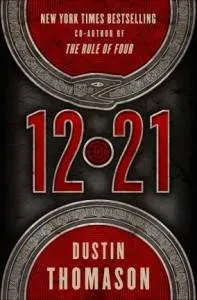 12.21 by Dustin Thomason
Sometimes you just need a medical thriller with some Mayan apocalypse drama thrown in for spice. Though the premise isn’t a new one, Thomason’s novel shakes up this overdone plot line of ancient curses and archeological mysteries with some timely end-of-the-world fun. This isn’t Hemingway, but when the main medical epidemic in a novel kills people by giving them weeks-long insomnia, and you JUST. KEEP. READING. because you’re a little scared you won’t be able to fall asleep, I’d say that’s a successful thriller. Thomason has done a great job at creating suspense connected to a thousand-year-old codex – not an easy feat – and making the reader a teensy bit afraid that the apocalypse might really have a chance. Thankfully Dec. 21, 2012 is already long gone.
–Rachel Manwill
12.21 by Dustin Thomason
Sometimes you just need a medical thriller with some Mayan apocalypse drama thrown in for spice. Though the premise isn’t a new one, Thomason’s novel shakes up this overdone plot line of ancient curses and archeological mysteries with some timely end-of-the-world fun. This isn’t Hemingway, but when the main medical epidemic in a novel kills people by giving them weeks-long insomnia, and you JUST. KEEP. READING. because you’re a little scared you won’t be able to fall asleep, I’d say that’s a successful thriller. Thomason has done a great job at creating suspense connected to a thousand-year-old codex – not an easy feat – and making the reader a teensy bit afraid that the apocalypse might really have a chance. Thankfully Dec. 21, 2012 is already long gone.
–Rachel Manwill
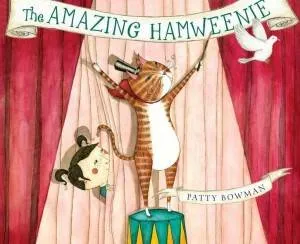 The Amazing Hamweenie by Patty Bowman
An amazing picture book about the precocious Hamweenie, who has grand dreams of being a famous magician and loved the world over. Instead, he must resign himself to apartment living, tea parties with little girls and fishy snacks, because Hamweenie is a cat. Cats can’t be world-renowned magicians, Hamweenie! Cat owners will recognize a bit of their cats in this book. Bowman’s wonderful illustrations of Hamweenie’s daydreams and schemes are delightful and hilarious. I hope there are more Hamweenie adventures. Plus, it’s just really fun to say Hamweenie. Hamweenie.
–Liberty Hardy
The Amazing Hamweenie by Patty Bowman
An amazing picture book about the precocious Hamweenie, who has grand dreams of being a famous magician and loved the world over. Instead, he must resign himself to apartment living, tea parties with little girls and fishy snacks, because Hamweenie is a cat. Cats can’t be world-renowned magicians, Hamweenie! Cat owners will recognize a bit of their cats in this book. Bowman’s wonderful illustrations of Hamweenie’s daydreams and schemes are delightful and hilarious. I hope there are more Hamweenie adventures. Plus, it’s just really fun to say Hamweenie. Hamweenie.
–Liberty Hardy
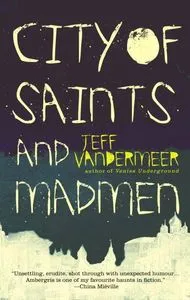 City of Saints and Madmen by Jeff VanderMeer
As a founding member of the New Weird and a prodigious imagination in his own right, Jeff VanderMeer’s crowning fictional achievement is the city of Ambergris, the most original and compelling megalopolis to appear in Fantasy for years. Providing this collection (as a novel comprised of novellas, it is the only appropriate word) with both its title and setting, Ambergris is a fungus-riddled phantasmagoria of hidden history and untrustworthy reality, and is, more than any of its curious inhabitants, the main character of this book. VanderMeer exploits every technique in his elegant, postmodernist arsenal to make the reader’s connection to the city real and unnerving, and unless you prefer your fiction as ploddingly linear as possible, you will be thrilled by the experience. Continued in Shriek: An Afterword and Finch, the other two entries in the Ambergris trilogy, City of Saints and Madmen is a true masterpiece of literary world-building.
–Sean Bell
City of Saints and Madmen by Jeff VanderMeer
As a founding member of the New Weird and a prodigious imagination in his own right, Jeff VanderMeer’s crowning fictional achievement is the city of Ambergris, the most original and compelling megalopolis to appear in Fantasy for years. Providing this collection (as a novel comprised of novellas, it is the only appropriate word) with both its title and setting, Ambergris is a fungus-riddled phantasmagoria of hidden history and untrustworthy reality, and is, more than any of its curious inhabitants, the main character of this book. VanderMeer exploits every technique in his elegant, postmodernist arsenal to make the reader’s connection to the city real and unnerving, and unless you prefer your fiction as ploddingly linear as possible, you will be thrilled by the experience. Continued in Shriek: An Afterword and Finch, the other two entries in the Ambergris trilogy, City of Saints and Madmen is a true masterpiece of literary world-building.
–Sean Bell
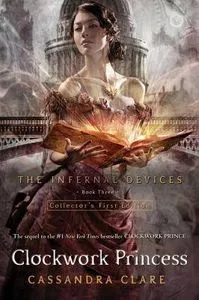 Clockwork Princess by Cassandra Clare
I’ve was looking forward to reading Clockwork Princess, the third and final book in Clare’s Infernal Devices trilogy, and I was not disappointed. Full of Clare’s signature witty dialogue, attractive male characters, and heart-wrenching love triangles, Princess brought the trilogy to a satisfying (and tear-jerking) conclusion. It was fascinating to read an actual ending by Cassandra Clare because in my experience of her writing so far – both in her Mortal Instruments series and her fanfiction from back in the day – she just spins things out and complicates the plot until I start to lose interest in the characters. It turns she does know how to wrap up a series and she does it rather well. Infernal Devices is a page turner of a series; it took me four days to finish it, and each book is around 500 pages. If you like YA fantasy, sarcastic young men, and great storytelling, you’ll enjoy it too.
–Becky Cole
Clockwork Princess by Cassandra Clare
I’ve was looking forward to reading Clockwork Princess, the third and final book in Clare’s Infernal Devices trilogy, and I was not disappointed. Full of Clare’s signature witty dialogue, attractive male characters, and heart-wrenching love triangles, Princess brought the trilogy to a satisfying (and tear-jerking) conclusion. It was fascinating to read an actual ending by Cassandra Clare because in my experience of her writing so far – both in her Mortal Instruments series and her fanfiction from back in the day – she just spins things out and complicates the plot until I start to lose interest in the characters. It turns she does know how to wrap up a series and she does it rather well. Infernal Devices is a page turner of a series; it took me four days to finish it, and each book is around 500 pages. If you like YA fantasy, sarcastic young men, and great storytelling, you’ll enjoy it too.
–Becky Cole
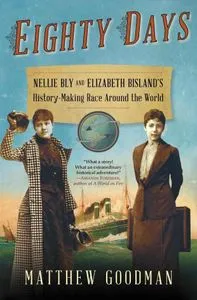 Eighty Days by Matthew Goodman
On November 14, 1889 25-year-old reporter Nellie Bly left New York on a steamship heading for England on a quest to go travel around the world faster than Phineas Fogg’s fictional trip in Jules Verne’s Around the World in Eighty Days. Hours later, 28-year-old literary critic Elizabeth Bisland left New York by train heading to San Francisco, intending to race Bly around the world at the behest of her magazine editor. In Eighty Days, Goodman tells the story of these two intrepid women, traveling through some of the most difficult circumstances at a time when most of the world couldn’t figure out how a woman could possibly travel with only one suitcase. Goodman intersperses their adventures with a bunch of historical tidbits that I ate up with a spoon.
–Kim Ukura
Eighty Days by Matthew Goodman
On November 14, 1889 25-year-old reporter Nellie Bly left New York on a steamship heading for England on a quest to go travel around the world faster than Phineas Fogg’s fictional trip in Jules Verne’s Around the World in Eighty Days. Hours later, 28-year-old literary critic Elizabeth Bisland left New York by train heading to San Francisco, intending to race Bly around the world at the behest of her magazine editor. In Eighty Days, Goodman tells the story of these two intrepid women, traveling through some of the most difficult circumstances at a time when most of the world couldn’t figure out how a woman could possibly travel with only one suitcase. Goodman intersperses their adventures with a bunch of historical tidbits that I ate up with a spoon.
–Kim Ukura
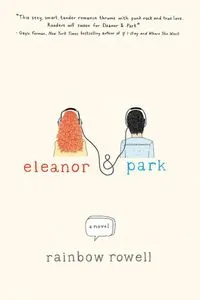 Eleanor & Park by Rainbow Rowell
This tale of two music-loving sixteen-year-old misfits from the wrong side of the tracks in Omaha fills me with so much love I’m surprised magic sparkles don’t fly from my fingertips whenever I type about it. Set in 1986 these two crazy kids go from wary interest to gushy teenage love while sharing a seat on the bus and trying to avoid the asshole cool kids who sit in the back. There is not a single sour note in this lovely YA novel that I cannot stop yammering about. It’s so touching and Rowell perfectly captures that exquisite torture that is falling in love for the first time.
–Jodi Chromey
Eleanor & Park by Rainbow Rowell
This tale of two music-loving sixteen-year-old misfits from the wrong side of the tracks in Omaha fills me with so much love I’m surprised magic sparkles don’t fly from my fingertips whenever I type about it. Set in 1986 these two crazy kids go from wary interest to gushy teenage love while sharing a seat on the bus and trying to avoid the asshole cool kids who sit in the back. There is not a single sour note in this lovely YA novel that I cannot stop yammering about. It’s so touching and Rowell perfectly captures that exquisite torture that is falling in love for the first time.
–Jodi Chromey
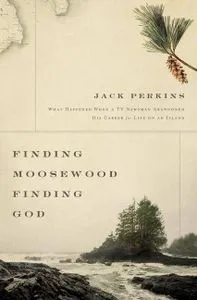 Finding Moosewood, Finding God by Jack Perkins
At the height of a successful career, famed NBC news correspondent Jack Perkins traded designer suits for L.L. Bean boots and moved three thousand miles from the bustling streets of LA to a small tidal island off the coast of Bar Harbor, Maine. His memoir chronicles a series of divine encounters that eventually led him to Acadia and reflects on how going rustic in the wild beauty of Maine changed his perspective on life. Lovers of spiritual memoir, Thoreau, or travel writing will find Finding Moosewood a fulfilling read.
–Kate Scott
Finding Moosewood, Finding God by Jack Perkins
At the height of a successful career, famed NBC news correspondent Jack Perkins traded designer suits for L.L. Bean boots and moved three thousand miles from the bustling streets of LA to a small tidal island off the coast of Bar Harbor, Maine. His memoir chronicles a series of divine encounters that eventually led him to Acadia and reflects on how going rustic in the wild beauty of Maine changed his perspective on life. Lovers of spiritual memoir, Thoreau, or travel writing will find Finding Moosewood a fulfilling read.
–Kate Scott
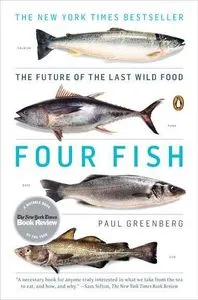 Four Fish by Paul Greenberg
Ever deeply wondered where your salmon comes from? Or sea bass, cod or tuna? Greenberg, an avid fisherman and wowza writer (the way he describes a salmon run in Alaska made me want to move there) does the dirty work for you. Delving into the natural history, social history, and potential futures of these iconic fish (where genetically modified farmed ones take over, and wild ones go the way of the Dodo) you won’t look at your finned friends’ dead eyes at the fish counter in the same way again.
–Elizabeth Bastos
Four Fish by Paul Greenberg
Ever deeply wondered where your salmon comes from? Or sea bass, cod or tuna? Greenberg, an avid fisherman and wowza writer (the way he describes a salmon run in Alaska made me want to move there) does the dirty work for you. Delving into the natural history, social history, and potential futures of these iconic fish (where genetically modified farmed ones take over, and wild ones go the way of the Dodo) you won’t look at your finned friends’ dead eyes at the fish counter in the same way again.
–Elizabeth Bastos
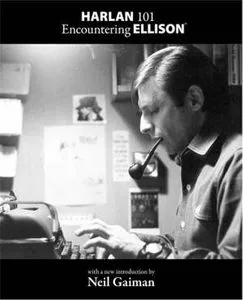 Harlan 101: Encountering Ellison
Harlan Ellison is well known in the circles of speculative fiction, having won the Hugo nine times and the Nebula Award four times He’s even won a Grammy. Encountering Ellison is a collection of some of his most well known stories and includes seven essays on the craft of writing. Either of these, the stories or the essays, would be totally worth the hefty price ($39.95). The stories include his most famous ones, The Deathbird and I Have No Mouth, and I Must Scream. Harlan writes science fiction and a sort of dark contemporary fantasy (speculative fiction) that is among the best out there, and the stories age really well. If you write short fiction, especially science fiction or fantasy, you want this book. Trust me. The book has an introduction by Neil Gaiman in which he says: “You are lucky to be holding this book in your hands.”
–Johann Thorsson
Harlan 101: Encountering Ellison
Harlan Ellison is well known in the circles of speculative fiction, having won the Hugo nine times and the Nebula Award four times He’s even won a Grammy. Encountering Ellison is a collection of some of his most well known stories and includes seven essays on the craft of writing. Either of these, the stories or the essays, would be totally worth the hefty price ($39.95). The stories include his most famous ones, The Deathbird and I Have No Mouth, and I Must Scream. Harlan writes science fiction and a sort of dark contemporary fantasy (speculative fiction) that is among the best out there, and the stories age really well. If you write short fiction, especially science fiction or fantasy, you want this book. Trust me. The book has an introduction by Neil Gaiman in which he says: “You are lucky to be holding this book in your hands.”
–Johann Thorsson
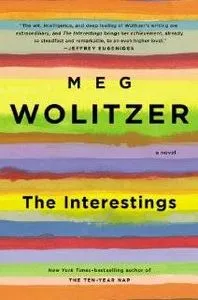 The Interestings by Meg Wolitzer (Riverhead, April 9)
A panoramic novel set in New York City, the story centers around a group of friends who met at a summer camp for artists. They form a bond that lasts throughout their whole lives, and deal with money, envy, social issues, power, and death. It’s a big book with outstanding character development, and an up close and personal look at the effect of what happens when one friend is more successful than another friend. Quite an ambitious book, but Wolitzer uses her keen eye for observing social statuses and has an ability to tell a realistic and non-boring version of how people age.
–Emily Gatlin
The Interestings by Meg Wolitzer (Riverhead, April 9)
A panoramic novel set in New York City, the story centers around a group of friends who met at a summer camp for artists. They form a bond that lasts throughout their whole lives, and deal with money, envy, social issues, power, and death. It’s a big book with outstanding character development, and an up close and personal look at the effect of what happens when one friend is more successful than another friend. Quite an ambitious book, but Wolitzer uses her keen eye for observing social statuses and has an ability to tell a realistic and non-boring version of how people age.
–Emily Gatlin
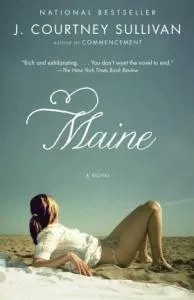 Maine by J. Courtney Sullivan
I’ve had this on my shelf since it was declared the MUST-READ of summer 2011. I finally got around to it in the winter of 2013, and I’m so glad I did! It follows the women of a large Irish Catholic family, spanning several generations of alcoholism and dysfunction. The characters are just perfect- one part hateful and one part sympathetic, just like…ya know, most people. I spent an inordinate amount of time wondering if I’m an Alice (the hard-hearted, cold, and vain matriarch) or a Maggie (the artist granddaughter in therapy), which means the book made me think for hours about what sort of woman, mother, and creative-type I am and want to be. I’m sure it would be a perfect summer read, but I say read it whenever you can, wherever you can.
–Amanda Nelson
Maine by J. Courtney Sullivan
I’ve had this on my shelf since it was declared the MUST-READ of summer 2011. I finally got around to it in the winter of 2013, and I’m so glad I did! It follows the women of a large Irish Catholic family, spanning several generations of alcoholism and dysfunction. The characters are just perfect- one part hateful and one part sympathetic, just like…ya know, most people. I spent an inordinate amount of time wondering if I’m an Alice (the hard-hearted, cold, and vain matriarch) or a Maggie (the artist granddaughter in therapy), which means the book made me think for hours about what sort of woman, mother, and creative-type I am and want to be. I’m sure it would be a perfect summer read, but I say read it whenever you can, wherever you can.
–Amanda Nelson
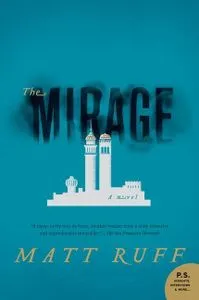 The Mirage by Matt Ruff
On November 9, 2001, planes hijacked by Christian fundamentalists crashed into twin towers in downtown Baghdad. Or, at least, that’s what happens in Matt Ruff’s innovative The Mirage, a (sort-of-but-not-really) alternative history of the past decade. The story follows Arabian Homeland Security officers tasked with investigating claims that the present geopolitical landscape—with the United Arabian States a superpower and North America a patchwork of fragmented and failed nations—is a mirage. Ruff is blisteringly smart, but he doesn’t just coast on his clever concept . Instead, he uses that concept to develop interesting characters with real emotional heft.
–Derek Attig
The Mirage by Matt Ruff
On November 9, 2001, planes hijacked by Christian fundamentalists crashed into twin towers in downtown Baghdad. Or, at least, that’s what happens in Matt Ruff’s innovative The Mirage, a (sort-of-but-not-really) alternative history of the past decade. The story follows Arabian Homeland Security officers tasked with investigating claims that the present geopolitical landscape—with the United Arabian States a superpower and North America a patchwork of fragmented and failed nations—is a mirage. Ruff is blisteringly smart, but he doesn’t just coast on his clever concept . Instead, he uses that concept to develop interesting characters with real emotional heft.
–Derek Attig
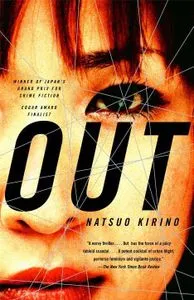 Out by Natsuo Kirino
When Rachel called this a badass female revenge thriller and put it alongside Gone Girl and Michel Faber’s Under the Skin–two books that made me all kinds of tingly in my reading parts–I knew I had to have it. And HOO BOY, what a ride! About a group of Japanese women who work the night shift in a factory and become conspirators when one kills her husband and the others work to help her cover it up, this is a deliciously dark read about why you don’t fuck with strong women. It’s gritty and disturbing, and you won’t get through it without squirming (I think it’s closer to Under the Skin than to Gone Girl), but you’ll love every uncomfortable minute of it.
–Rebecca Joines Schinsky
Out by Natsuo Kirino
When Rachel called this a badass female revenge thriller and put it alongside Gone Girl and Michel Faber’s Under the Skin–two books that made me all kinds of tingly in my reading parts–I knew I had to have it. And HOO BOY, what a ride! About a group of Japanese women who work the night shift in a factory and become conspirators when one kills her husband and the others work to help her cover it up, this is a deliciously dark read about why you don’t fuck with strong women. It’s gritty and disturbing, and you won’t get through it without squirming (I think it’s closer to Under the Skin than to Gone Girl), but you’ll love every uncomfortable minute of it.
–Rebecca Joines Schinsky
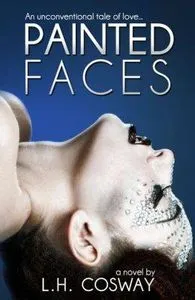 Painted Faces by L.H. Cosway
There are some books that are made for self-publishing, and Painted Faces is one of those books. Too “weird” for traditional publishers and too sweet for many romance e-publishers, it tells the story of a young Dubliner named Freda who falls in love with a drag queen. That’s right, a drag queen. One doesn’t come across heterosexual drag queen heroes in the average romance novel, that’s for sure; and books like this make me glad self-publishing is now an affordable option for writers, as this story is definitely one that deserves to be read. I downloaded Painted Faces because the premise sounded just crazy enough to be awesome (and it came highly recommended), and I’m really glad I did. Forget about the drag queen thing, though–what really makes Painted Faces great is the heroine. Freda is an awesome character who is absolutely hilarious and I immediately fell in love with her. The secondary characters are also fun, and the setting is fabulous. I now officially love Dublin as a setting in any book. The novel does tend to get 50 Shades-y at times, but these are just small blips; for the most part, Painted Faces is entertaining and unputdownable–I stayed up until 3 AM while I was sick reading it. If you like contemporary romances you should definitely check it out.
–Tasha Brandstatter
Painted Faces by L.H. Cosway
There are some books that are made for self-publishing, and Painted Faces is one of those books. Too “weird” for traditional publishers and too sweet for many romance e-publishers, it tells the story of a young Dubliner named Freda who falls in love with a drag queen. That’s right, a drag queen. One doesn’t come across heterosexual drag queen heroes in the average romance novel, that’s for sure; and books like this make me glad self-publishing is now an affordable option for writers, as this story is definitely one that deserves to be read. I downloaded Painted Faces because the premise sounded just crazy enough to be awesome (and it came highly recommended), and I’m really glad I did. Forget about the drag queen thing, though–what really makes Painted Faces great is the heroine. Freda is an awesome character who is absolutely hilarious and I immediately fell in love with her. The secondary characters are also fun, and the setting is fabulous. I now officially love Dublin as a setting in any book. The novel does tend to get 50 Shades-y at times, but these are just small blips; for the most part, Painted Faces is entertaining and unputdownable–I stayed up until 3 AM while I was sick reading it. If you like contemporary romances you should definitely check it out.
–Tasha Brandstatter
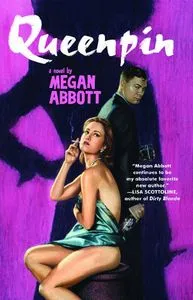 Queenpin by Megan Abbott
I’ve been striking out lately, but Megan Abbott’s Queenpin was a flicker at the end of a dark tunnel. Set in mid-century somewheresville, Queenpin is populated with diamond heists, race tracks, roulette wheels, and gin martinis. Mob legend Gloria Denton is grooming a young ingenue for the seedy criminal underworld, but things turn awry when the protégée narrator falls for a freewheeling gambling man named Vic. The two leading ladies are strong and unrepentant, and Abbott’s spare, tight wordplay is refreshing. I’m desperately curious about her follow up novel starring — wait for it — high school cheerleaders!
–Rachel Smalter Hall
Queenpin by Megan Abbott
I’ve been striking out lately, but Megan Abbott’s Queenpin was a flicker at the end of a dark tunnel. Set in mid-century somewheresville, Queenpin is populated with diamond heists, race tracks, roulette wheels, and gin martinis. Mob legend Gloria Denton is grooming a young ingenue for the seedy criminal underworld, but things turn awry when the protégée narrator falls for a freewheeling gambling man named Vic. The two leading ladies are strong and unrepentant, and Abbott’s spare, tight wordplay is refreshing. I’m desperately curious about her follow up novel starring — wait for it — high school cheerleaders!
–Rachel Smalter Hall
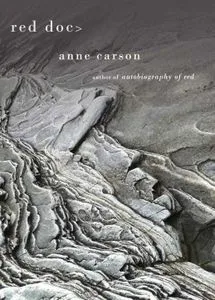 Red Doc> by Anne Carson
It’s been years since I read The Autobiography of Red, but the impact of that book has never faded. So you can imagine my excitement when I heard about the sequel, and my glee when I got my hands on a copy. There may have been jumping up and down. And Red Doc> absolutely does not disappoint. Carson is a wordsmith of the highest order, and sends the reader on a roadtrip of mythic proportions, complete with strange creatures, colorful side characters, revelations and losses. Plus, it’s really fun to speculate about the use of the greater-than sign. What do you think it means?
–Jenn Northington
Red Doc> by Anne Carson
It’s been years since I read The Autobiography of Red, but the impact of that book has never faded. So you can imagine my excitement when I heard about the sequel, and my glee when I got my hands on a copy. There may have been jumping up and down. And Red Doc> absolutely does not disappoint. Carson is a wordsmith of the highest order, and sends the reader on a roadtrip of mythic proportions, complete with strange creatures, colorful side characters, revelations and losses. Plus, it’s really fun to speculate about the use of the greater-than sign. What do you think it means?
–Jenn Northington
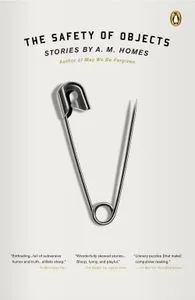 The Safety of Objects by A. M. Homes
I often hear great writers described as surgeons, but I think of A.M. Homes more as a dentist (and I mean that in the best possible way). In her 1990 collection, The Safety of Objects, she explores the quiet desperation of suburbia, shining a blinding and unflattering light right in your face as she pokes, prods, and excavates with her sharp and sinister tools. She also (like my dentist, at least) uses humor to temper the discomfort–and that’s when she busts out the drill. These stories are uncomfortable but necessary, and leave you disoriented, numb, and desperate for a lollipop.
(Important Tip: DO NOT read the back cover. It commits the cardinal sin of revealing just a bit too much and diffuses some of the suspense.)
–Minh Le
The Safety of Objects by A. M. Homes
I often hear great writers described as surgeons, but I think of A.M. Homes more as a dentist (and I mean that in the best possible way). In her 1990 collection, The Safety of Objects, she explores the quiet desperation of suburbia, shining a blinding and unflattering light right in your face as she pokes, prods, and excavates with her sharp and sinister tools. She also (like my dentist, at least) uses humor to temper the discomfort–and that’s when she busts out the drill. These stories are uncomfortable but necessary, and leave you disoriented, numb, and desperate for a lollipop.
(Important Tip: DO NOT read the back cover. It commits the cardinal sin of revealing just a bit too much and diffuses some of the suspense.)
–Minh Le
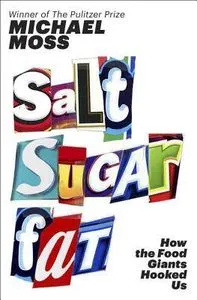 Salt Sugar Fat: How the Food Giants Hooked Us by Michael Moss
Pulitzer-Prize winning reporter Michael Moss’s new book is an explosive expose of the lucrative processed foods industry, focused on the three additives that food companies use to “hook” us: salt, sugar, and fat. Salt Sugar Fat is well-researched and loaded with original interviews with many of the architects behind the processed food we eat, including a former Coca-Cola executive and the creator of Lunchables. Hearing firsthand accounts from whistleblowers about companies manipulating their “heavy users” through scientifically-calculated “bliss points” (achieved by manipulating salt, sugar and fat in their products) is chilling. Perhaps the most disturbing thing I learned, however, was that Betty Crocker was never a real person.
–Andrew Shaffer
Salt Sugar Fat: How the Food Giants Hooked Us by Michael Moss
Pulitzer-Prize winning reporter Michael Moss’s new book is an explosive expose of the lucrative processed foods industry, focused on the three additives that food companies use to “hook” us: salt, sugar, and fat. Salt Sugar Fat is well-researched and loaded with original interviews with many of the architects behind the processed food we eat, including a former Coca-Cola executive and the creator of Lunchables. Hearing firsthand accounts from whistleblowers about companies manipulating their “heavy users” through scientifically-calculated “bliss points” (achieved by manipulating salt, sugar and fat in their products) is chilling. Perhaps the most disturbing thing I learned, however, was that Betty Crocker was never a real person.
–Andrew Shaffer
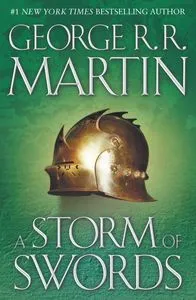 A Storm of Swords by George R. R. Martin
I didn’t think I was ever going to finish this 1100-plus page brick of a book, the third in the Song of Ice and Fire series, on which the runaway hit Game of Thrones is based. I love the show, but I absolutely adore the books. Martin’s writing is stronger here than in books one and two. I realized this when I found myself actually loving a character I had previously loved to hate. All of the backstory is fascinating and really well done. Most remarkable, though, is how very strong all the women are in their own ways, from brute strength to conniving to an impenetrable armor of courtesy. Obviously, I’m being very careful to avoid spoilers here. If you watch the show, read the books. This series has essentially nothing in common with Harry Potter, but in my case a relevant comparison is that, like Prisoner of Azkaban, A Storm of Swords is shaping up to be my favorite in the series.
–Jeanette Solomon
A Storm of Swords by George R. R. Martin
I didn’t think I was ever going to finish this 1100-plus page brick of a book, the third in the Song of Ice and Fire series, on which the runaway hit Game of Thrones is based. I love the show, but I absolutely adore the books. Martin’s writing is stronger here than in books one and two. I realized this when I found myself actually loving a character I had previously loved to hate. All of the backstory is fascinating and really well done. Most remarkable, though, is how very strong all the women are in their own ways, from brute strength to conniving to an impenetrable armor of courtesy. Obviously, I’m being very careful to avoid spoilers here. If you watch the show, read the books. This series has essentially nothing in common with Harry Potter, but in my case a relevant comparison is that, like Prisoner of Azkaban, A Storm of Swords is shaping up to be my favorite in the series.
–Jeanette Solomon
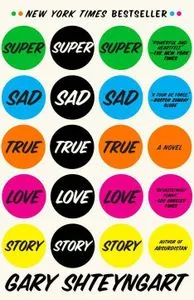 Super Sad True Love Story by Gary Shteyngart
Lenny Abramov, a sad-sack immortality peddler (no, really) falls for a rudderless young woman from a strict Korean family in what is unquestionably one of the most frightening dystopias I’ve encountered in print. At times, SSTL feels like Infinite Jest’s younger cousin, offering us a future where the lines between private and public lives have all but evaporated, the U.S. economy has come under China’s thumb, and credit scores are shorthand for self-worth. Wait, does that not sound particularly futuristic? If not, you understand why Shteyngart’s vision is so freaky: it amplifies current trends in a way that never seems outlandish enough to warrant dismissal. Under the book’s decidedly sharp satire, however, is a story about the anxieties many of us face with regards to our families, our jobs, and our desire to find love. SSTL works incredibly well on both of these levels and left me ready to check out Mr. Shteyngart’s other books, Absurdistan and The Russian Debutante’s Handbook.
–Josh Corman
Super Sad True Love Story by Gary Shteyngart
Lenny Abramov, a sad-sack immortality peddler (no, really) falls for a rudderless young woman from a strict Korean family in what is unquestionably one of the most frightening dystopias I’ve encountered in print. At times, SSTL feels like Infinite Jest’s younger cousin, offering us a future where the lines between private and public lives have all but evaporated, the U.S. economy has come under China’s thumb, and credit scores are shorthand for self-worth. Wait, does that not sound particularly futuristic? If not, you understand why Shteyngart’s vision is so freaky: it amplifies current trends in a way that never seems outlandish enough to warrant dismissal. Under the book’s decidedly sharp satire, however, is a story about the anxieties many of us face with regards to our families, our jobs, and our desire to find love. SSTL works incredibly well on both of these levels and left me ready to check out Mr. Shteyngart’s other books, Absurdistan and The Russian Debutante’s Handbook.
–Josh Corman
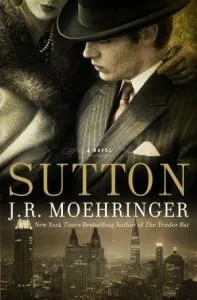 Sutton by J.R. Moehringer
Some writers write such smooth, insightful sentences and paragraphs, you’d read them on just about any subject. For me, J.R. Moehringer is one of those writers. But the subject of his first novel, Sutton, about early 20th-century anti-hero bank robber Willie Sutton, actually IS fascinating. The story is a simple fictional biography of the man, who when asked why he robbed banks, replied “Because that’s where the money is.” We start with Sutton’s release from jail in 1969 — and then follow him around New York as he tells a journalist the story of his life. We flash back in time to the 1920s and 30s when Sutton became a Robin Hood-like legend, stealing from banks that ruined the economy (and peoples’ lives) with less-than-on-the-level practices. (Sound familiar?) But Moehringer also has a few tricks up his sleeve as we hurdle to the conclusion — how does memory mix with myth to create (or to muddle?) perception of historical events? It’s an interesting question to think about, and this is an interesting novel — very much worth a read.
–Greg Zimmerman
Sutton by J.R. Moehringer
Some writers write such smooth, insightful sentences and paragraphs, you’d read them on just about any subject. For me, J.R. Moehringer is one of those writers. But the subject of his first novel, Sutton, about early 20th-century anti-hero bank robber Willie Sutton, actually IS fascinating. The story is a simple fictional biography of the man, who when asked why he robbed banks, replied “Because that’s where the money is.” We start with Sutton’s release from jail in 1969 — and then follow him around New York as he tells a journalist the story of his life. We flash back in time to the 1920s and 30s when Sutton became a Robin Hood-like legend, stealing from banks that ruined the economy (and peoples’ lives) with less-than-on-the-level practices. (Sound familiar?) But Moehringer also has a few tricks up his sleeve as we hurdle to the conclusion — how does memory mix with myth to create (or to muddle?) perception of historical events? It’s an interesting question to think about, and this is an interesting novel — very much worth a read.
–Greg Zimmerman
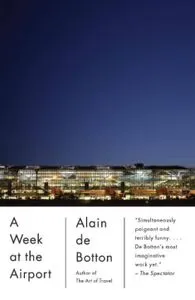 A Week At The Airport by Alain de Botton
In 2009, London Heathrow’s Terminal 5 hired de Botton to take up residence for a week, with full access to wander about at all times of the day, speak to anyone he liked, and write about anything he saw. The result is one of the strangest pieces of travel writing my brain has ever grappled with. As with all his other work it’s a beautiful and thoughtful read, but it’s also…eerie. Airports are strange places, packed with people and home to nobody. They’re stressful and soporific, thrilling and mundane. I’ve always been fascinated by them and yet, thanks to a fear of flying, mildly terrified of them. I feel a lot better about them after having read this book, which digs deep into the human stories that keep them running. It’s all still bouncing round my head a few weeks later.
–Mike Sowden
A Week At The Airport by Alain de Botton
In 2009, London Heathrow’s Terminal 5 hired de Botton to take up residence for a week, with full access to wander about at all times of the day, speak to anyone he liked, and write about anything he saw. The result is one of the strangest pieces of travel writing my brain has ever grappled with. As with all his other work it’s a beautiful and thoughtful read, but it’s also…eerie. Airports are strange places, packed with people and home to nobody. They’re stressful and soporific, thrilling and mundane. I’ve always been fascinated by them and yet, thanks to a fear of flying, mildly terrified of them. I feel a lot better about them after having read this book, which digs deep into the human stories that keep them running. It’s all still bouncing round my head a few weeks later.
–Mike Sowden
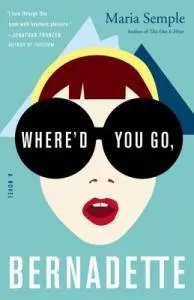 Where’d You Go, Bernadette? by Maria Semple
You’re likely raising an eyebrow at seeing this on yet another “best of” list but nuts to you: I’ve just gotten to it and it was a perfect gift as I explore Seattle. What I’ve loved most, though, are the sections about Bernadette’s life in Los Angeles, as a young architect, chipping away as a peon on the Getty Brentwood while transforming an old factory into a home. The image of the contractors she hired, sitting in a type of knitting circle and gossiping, still makes me smile.
–Jennifer Paull
Your turn, readers! What was the best book you read this month?
_________________________
Sign up for our newsletter to have the best of Book Riot delivered straight to your inbox every two weeks. No spam. We promise.
Where’d You Go, Bernadette? by Maria Semple
You’re likely raising an eyebrow at seeing this on yet another “best of” list but nuts to you: I’ve just gotten to it and it was a perfect gift as I explore Seattle. What I’ve loved most, though, are the sections about Bernadette’s life in Los Angeles, as a young architect, chipping away as a peon on the Getty Brentwood while transforming an old factory into a home. The image of the contractors she hired, sitting in a type of knitting circle and gossiping, still makes me smile.
–Jennifer Paull
Your turn, readers! What was the best book you read this month?
_________________________
Sign up for our newsletter to have the best of Book Riot delivered straight to your inbox every two weeks. No spam. We promise.








